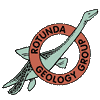7 November 2013 - Professor Sarah Davies
You may not have given much thought to the interval of geological time from the end of the Devonian (359 Ma) to the Early Carboniferous (347 Ma), but here's why it's important. The end of the Devonian was marked by a mass extinction event. The land-based fauna that survived the extinction laid the foundations of our modern ecosystem and therefore this is one of most significant changes in the evolution of life on land. A group of scientists from the UK are searching for clues about how, and why, aquatic and fish-like tetrapods (the first four-limbed vertebrates) evolved into land-going 'modern' tetrapods during a period of time in the Early Carboniferous. TW:eed stands for 'Tetrapod World: early evolution and diversification'. The fossil localities that will revolutionise our understanding of this key phase in the evolution of life were discovered by palaeontologists Stan Wood (Selkirk) and Tim Smithson (Cambridge) and are found close to home in the Borders region between Scotland and England. Most outcrops, on riverbanks and in quarries, reveal a few tens of metres of geology providing just a glimpse of this time period but a coastal exposure near Berwick-upon-Tweed provides a rare opportunity to examine ca. 15 million years of geological time following the mass extinction.
Understanding tetrapod evolution and discovering creatures that are new to science drive the TW:eed project and naturally lead to a broader study of their entire environment. Tetrapods were part of an ecosystem where other animals, including fish and invertebrates, and plants (true ferns and seed plants) were also rapidly evolving. The ecosystem would have been influenced by changes in the environment including river floods and wild fires, changing climatic conditions (temperature, humidity, aridity) and may have even been affected by atmospheric changes. Information about all these aspects is preserved in the rocks containing tetrapods and we are using a range of techniques to extract the data. Just one year into a four-year exciting multifaceted project, we are beginning to reveal the developing ecosystem that followed a major extinction.
To find out more:
- Website: www.tetrapods.org
- Blog www.tetrapodworld.com
- Twitter @tetrapodworld
